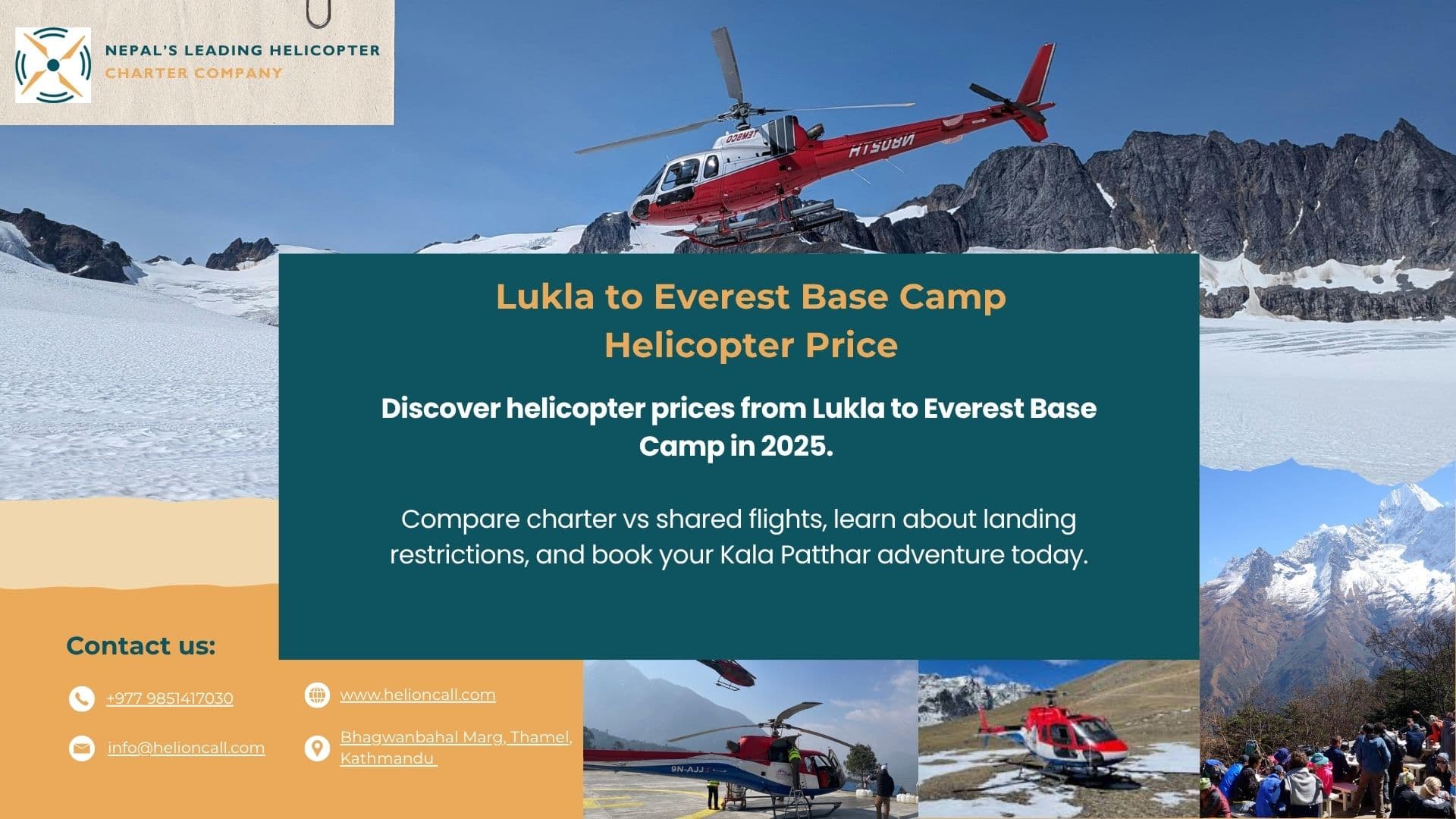- Why Start with Lukla Instead of Kathmandu?
- Factors That Affect Your Helicopter Price
- What's Included vs. What's Extra
- The Clear Winner: Kala Patthar vs. Everest Base Camp
- Real Traveler Experiences
- Book Your Flight: A Step-by-Step Guide
- Safety Reality: What You Need to Know
- Best Time to Fly: Seasonal Guide
- Essential Packing Guide
- Typical Flight Itinerary
- Frequently Asked Questions
- Why Choose Heli On Call?
- Why should you pick us for your helicopter needs?
- Ready to Fly? Contact Us Today
- Contact Heli On Call Today:
Lukla to Everest Base Camp Helicopter Price Guide for 2025
You have just successfully landed at Tenzing-Hillary Airport in Lukla, a thrilling experience. Perhaps your legs are still shaking from the trek, or perhaps you've just arrived and realized the altitude is truly daunting. Either way, you're standing at 2,860 meters, looking up at the towering Himalayas, and thinking, "Is there a faster way to reach Everest Base Camp?"
The answer is yes. And it's probably more affordable than you think.
A helicopter ride from Lukla to Everest Base Camp has become one of the most sought-after shortcuts in the Himalayas. Whether you're a trekker with limited time, someone struggling with altitude issues, or simply a traveler seeking to experience Everest without the 12-day commitment, this flight could be the ideal choice for you.
But here's the real question everyone asks: How much does it actually cost?
Let's break down everything you need to know about Lukla to Everest Base Camp helicopter prices, what you get for your money, and whether it's worth every rupee.
Why Start with Lukla Instead of Kathmandu?
Most travelers think of the classic Everest Base Camp helicopter tour starting from Kathmandu. That's a fantastic option if you're doing a day trip. But if you're already in Lukla—either because you've been trekking or you flew in separately—starting your helicopter journey here saves you significant time and money.
The Lukla Advantage: Save Time and Money
There are many good reasons why the Lukla route is becoming more popular. First, the flight duration is far shorter—only 15 to 25 minutes from Lukla to Kala Patthar or Everest Base Camp, compared to more than an hour from Kathmandu. This shorter flight duration means reduced expenditures because you're skipping the longest and most fuel-intensive part of the trip. This helicopter alternative gives trekkers who have already made it partway but need to turn back because of time limits, health concerns, or bad weather a chance to still see Everest up close without ruining the whole trip.
Great for When You Need Help
The route also works as a scenic flight and a safe way for people with altitude sickness or injuries to get out of the area. Furthermore, starting from Lukla means you won't see as many other visitors, so you can have a more personal experience with the Himalayas. You've already made it to the entrance of Everest, so why not take the speedy elevator to the top?
Prices for helicopters from Lukla to Everest Base Camp
Let's get to the numbers, which is what you actually want to know. The price of a helicopter ride from Lukla to Everest Base Camp depends on various things, such as whether you're arranging a private charter or a shared trip, how many people are flying, weight limits, and where the helicopter will land.
Private Charter: Full Control and Freedom
The price for each helicopter is between $1,800 and $2,500 USD.
The helicopter can accommodate 4 to 5 people, depending on the distribution of weight.
When you hire a private helicopter, you have full control over your schedule and experience. You can choose your departure time, spend more time at landing spots, and travel with your own group. When you book a private charter, you're getting a comprehensive package that includes a helicopter flight from Lukla to Kala Patthar at 5,550 meters, with 10 to 15 minutes of landing time for photos and sightseeing.
The journey may include a stop at Pheriche for weight balancing if necessary, and you'll have an experienced pilot along with complete safety equipment throughout the flight. The aerial views are absolutely spectacular, encompassing Everest, Lhotse, Nuptse, Ama Dablam, and the surrounding peaks that make the Khumbu region so legendary. This option is particularly ideal for families, couples, photographers, or anyone wanting a personalized experience without the pressure of rushing.
Shared Flight: Budget-Friendly Adventure
Price Range: $400 to $650 USD per person
Group Size: Typically 4-5 people total
If you're going somewhere by yourself or with one other person, shared flights are the cheapest way to go. You'll be with other travelers going to the same place, which will make the trip cheaper while still giving you the same amazing sights. The shared flight package includes a round-trip flight from Lukla to Kala Patthar, with a stop at the peak for around 10 minutes.
If the total weight of your group is too high for safety, the operator will offer shuttle service at Pheriche to make sure everyone gets a turn at the top. Even though you'll be sharing the helicopter, you'll still get the same amazing views from the air as private charters, flying over scenic valleys, old monasteries, and the highest peaks in the world. This choice is ideal for people who are traveling alone, on a budget, or who can be flexible with their schedule.
Tours by plane that don't land
Price: $350 to $500 per person (shared) or $1,500 to $2,000 per person (private)
Some airlines offer flights that go over Everest Base Camp but don't land at Kala Patthar. These trips usually cost less, but you don't get as much time on the ground for that once-in-a-lifetime photo. These flyover tours include aerial views of Everest Base Camp and the Khumbu Glacier, giving you plenty of opportunities for aerial photography. Instead of landing at Kala Patthar, the helicopter may land briefly at lower altitudes, such as Pheriche or Gorak Shep.
It is important to note that, as a result of recent regulations implemented following the 2023 safety review, direct landings at Everest Base Camp are no longer permitted in order to minimize disturbance to climbers and protect the fragile glacier environment. Most reputable tours now land at Kala Patthar, which provides better views of Everest's iconic south face.
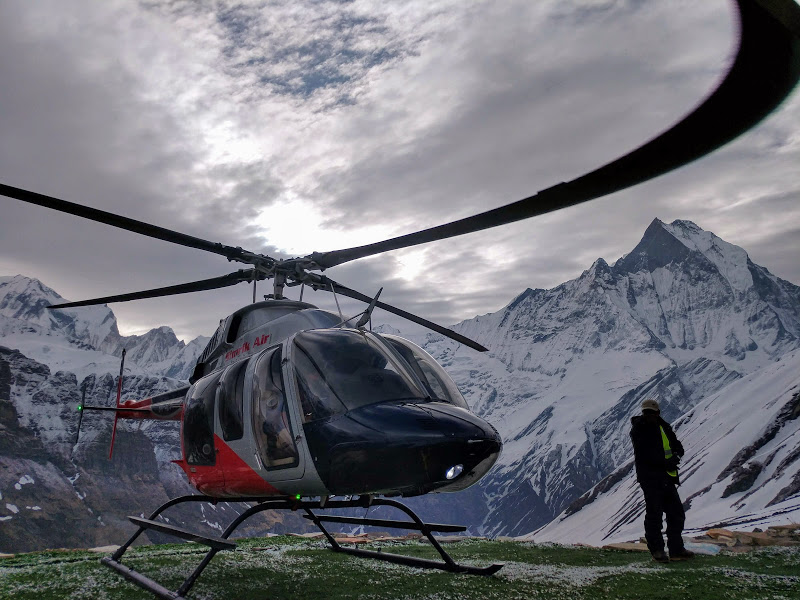
Factors That Affect Your Helicopter Price
Understanding what influences pricing helps you make informed decisions and avoid surprises.
Weight Restrictions and Shuttle Requirements
Weight restrictions play a massive role in helicopter pricing and safety. Helicopters flying at high altitudes can only carry 500 kg at a time, which includes passengers, cargo, and fuel. At Kala Patthar, which is 5,550 meters high, the air is so thin that helicopters have a hard time staying in the air; therefore, it's very important to keep track of your weight. If the total weight of your group is more than 250 kg, the helicopter will have to make two trips from Pheriche to pick up passengers. These trips will inevitably take longer and cost more. It's not just nice to be honest about how much your passengers weigh when you book; it's also important for everyone's safety.
Seasonal Pricing and Weather Windows
When you fly has a big effect on both the price and the experience. From March to May and September to December, the peak trekking seasons, demand goes up a lot, and prices may go up to match. Clear winter days are great for taking pictures because they make everything look so clear, but these great weather windows usually come with high prices. Bad weather is the great equalizer in the Himalayas. It can delay or even cancel flights, no matter how much you've paid. That's why experienced travelers usually add extra days to their plans.
Optional Add-Ons and Extensions
Your basic Lukla to Kala Patthar flight is already incredible, but many travelers enhance their experience with additional stops. Adding a breakfast stop at the legendary Everest View Hotel in Syangboche, where you can sip coffee while gazing at Everest, costs an additional $150 to $250 per helicopter. For those wanting to extend their journey to the Gokyo Lakes, which provide views of stunning turquoise glacial lakes and the massive Ngozumpa Glacier, expect to add approximately $300 to $500 to your charter price.
Aircraft Type and Specifications
Most reputable operators use the Airbus H125 (AS350 B3e) because it's specifically engineered for high-altitude operations and has proven reliability in the thin Himalayan air. Some luxury charter services may offer newer models with improved cabin comfort, larger windows for better photography, or quieter engines, and these premium features naturally raise the cost.
What's Included vs. What's Extra
Standard Inclusions
When you pay for a helicopter tour from Lukla, your package includes experienced high-altitude pilots who have logged hundreds of hours navigating the Himalayas. Every flight comes with comprehensive safety equipment such as oxygen masks, first aid kits, and emergency communication devices. The centerpiece is your landing at Kala Patthar, providing the absolute best viewpoint of Mount Everest—higher than Base Camp itself with dramatically clearer sightlines.
The aerial tour component offers flyovers of legendary landmarks, including Tengboche Monastery, Ama Dablam, Pheriche Valley, and the massive Khumbu Glacier. Your helicopter makes fuel stops at Lukla both before departure and after returning, ensuring safe operations throughout.
What You'll Pay Extra For
Breakfast at Everest View Hotel is an optional add-on that must be specifically booked separately. Operators sometimes handle Sagarmatha National Park entry fees, but usually it's up to the tourist to do so. Although having comprehensive trip insurance that covers high-altitude activities and helicopter evacuation is crucial, they are never covered. Tips for pilots and ground crew are optional, and any personal costs, like extra snacks or souvenirs, are not included in the tour package.
The Clear Winner: Kala Patthar vs. Everest Base Camp
Many travelers become confused at this point, so allow me to explain why one choice is clearly better.
Why Everest Base Camp Isn't the Best Option
Everest Base Camp is on the Khumbu Glacier at 5,364 meters and is surrounded by tents for climbers during the climbing season. The unstable glacier terrain creates many landing limitations at this location, as climbers need to reach the top without too much trouble. From a viewing perspective, base camp is somewhat disappointing because the moraines and the route to reach it obstruct part of Everest's view. However, in Heli on Call, we can coordinate a landing at Everest Base Camp on a specific day and time.
Why every time, Kala Patthar wins.
Kala Patthar is a rocky ridge that goes up to 5,550 meters above Gorak Shep. This is almost 200 meters higher than base camp. From this high point, you can see Everest, Lhotse, Nuptse, and Pumori in all directions, and the south face of Everest is well framed. The landing zone is significantly safer with solid rock rather than shifting glacier ice. This is why experienced trekkers who've hiked for two weeks still make the predawn climb to Kala Patthar—the views are that much better.
Real Traveler Experiences
Sarah's Emergency Solution (Australia, Age 34)
"We had trekked to Namche and were feeling great, but on day four, my husband started showing signs of altitude sickness. Instead of taking risks, we descended to Lukla. The next morning, after he'd recovered in the lower altitude, we took a helicopter straight to Kala Patthar. We still had the opportunity to observe Everest up close, captured those remarkable photographs we had envisioned, and my husband recovered safely. That helicopter ride was the best $1,200 we spent."
Raj's Lifelong Dream Fulfilled (Mumbai, Age 58)
"I've always been honest with myself—I'm not young enough for a two-week trek at high altitude. But seeing Everest has been my lifelong dream since reading about Tenzing Norgay and Edmund Hillary as a boy. Flying from Lukla was absolutely perfect. The pilot even circled Ama Dablam twice for the perfect photo. Standing at Kala Patthar fulfilled something deep in my soul. Worth every single rupee."
Emma and Jake's Honeymoon Adventure (Canada)
"We wanted something special for our honeymoon that would symbolize starting our marriage at the top of the world. The private charter from Lukla gave us this incredibly intimate moment at Kala Patthar, just us with Everest towering behind. Our wedding photos don't compare to that image of us with the highest mountain on Earth as our backdrop."
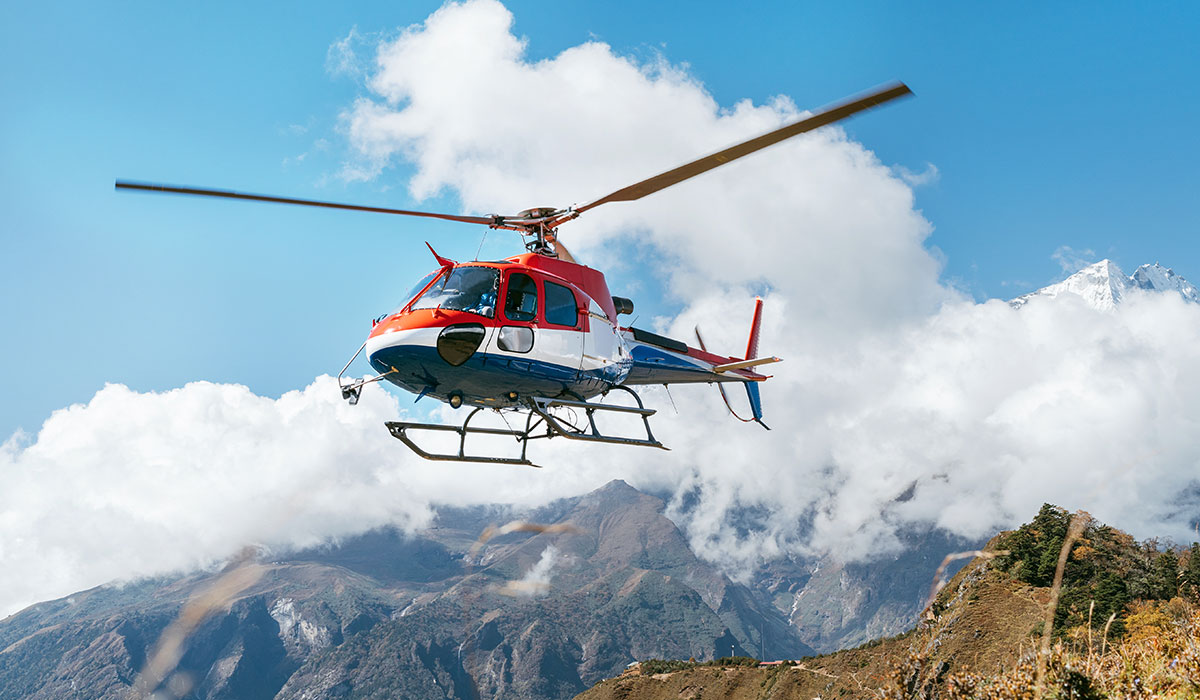
Book Your Flight: A Step-by-Step Guide
Choose your flight type.
Based on your budget and group size, decide whether to book a private charter or a shared flight. Private charters provide complete control at a higher cost, whereas shared flights are excellent value for solo travelers or couples.
Check availability early.
Peak season (March-May and September-November) fills up extremely quickly. Book at least 2-3 weeks in advance, or earlier in October and April when demand is highest.
Be Honest About Weight
The physics of high-altitude flight don't allow flexibility. Provide accurate passenger weights—this isn't about judgment; it's about safety calculations that determine whether your flight succeeds or faces dangerous situations.
Understand Weather Policies
Himalayan weather changes dramatically within hours. Before making any deposits, please confirm the cancellation and rescheduling policy in writing. Heli on Call will offer a full refund or alternative dates if weather cancels your flight.
Verify All Inclusions
Ask specifically about landing time at Kala Patthar, breakfast stop options, who pays national park fees, what insurance coverage exists, and what gaps you need to fill with personal travel insurance. These conversations prevent unpleasant surprises at departure.
Secure Proper Insurance
Comprehensive travel insurance covering helicopter evacuation and high-altitude activities up to 6,000 meters is absolutely non-negotiable. Many standard policies exclude aviation or have altitude limits below where you'll fly. The small additional cost of proper coverage is negligible when compared to the potential $15,000+ emergency evacuation costs without coverage.
Safety Reality: What You Need to Know
The 2023 incident and regulatory changes
Let's be honest: flying helicopters in the Himalayas comes with inherent risks. In 2023, a Manang Air helicopter crashed near Lobuche, resulting in a temporary ban on tourist landings. The pilot survived with minor injuries, but the incident resulted in significant safety improvements.
New safety standards.
Following the accident, authorities imposed stricter weight enforcement with severe penalties, formalized landing restrictions at Base Camp, increased pilot training requirements, and improved weather monitoring systems. Private charters with fewer than two passengers can still land in certain restricted areas, but larger shared groups must remain airborne or use designated alternate spots.
Current safety status
Thanks to regulatory changes and lessons learned, helicopter tours are safer than ever before. Accidents do occur in mountain aviation—this is an unavoidable reality—but they are incredibly rare when compared to the thousands of successful annual flights. Heli on Call, with experienced pilots, well-maintained aircraft, and strict safety protocols, has a proven track record that should instill confidence in travelers.
Always book with certified operators, check pilot credentials, and never fly in questionable weather, no matter how disappointed you are with delays. No photo is worth risking your life, and if pilots say conditions aren't safe, trust that judgment even if skies look clear to untrained eyes.
Best Time to Fly: Seasonal Guide
Spring (March-May): Blooming Beauty
Spring brings clear skies and moderate temperatures, with rhododendron forests in full bloom providing a stunning contrast to white peaks. However, this is peak climbing season, which means increased air traffic and higher prices due to expedition support operations.
Autumn (September-November): Peak Perfection
Autumn is widely regarded as the best time for photography due to the crisp post-monsoon air and exceptional clarity. The temperatures are comfortable, but cold weather gear is still required. This popular season fills up quickly, and prices are at their highest—make reservations several weeks or months in advance.
Winter (December-February): Bold Choice
When high-pressure systems settle, winter brings far fewer crowds and crystal-clear skies, allowing for spectacular visibility. However, temperatures drop to minus 15-20°C, necessitating serious cold-weather gear, and weather patterns become less predictable, with more cancellations. The benefit? Reduced costs for tourists on a tight budget who can cope with temperature fluctuations.
Monsoon (June-August): Avoid Completely
Heavy cloud cover obscures mountain views, frequent cancellations make planning impossible, and increased safety risks from thunderstorms and reduced visibility make high-altitude flying genuinely dangerous. If conditions improve, postpone your Everest helicopter tour.
Winner: For exceptional photos, October and November provide the ideal balance of consistent weather, great visibility, pleasant temperatures, and enchanting light quality.
Essential Packing Guide
Critical Clothing Items
Focus on warm layers you can adjust as needed. Temperature in Lukla might be comfortable at 10-15°C, but Kala Patthar faces below-freezing temperatures with significant wind chill. Pack a quality down jacket (essential, not optional), gloves that allow camera operation while protecting fingers, a warm hat covering your ears, UV-protective sunglasses (snow blindness is real), and high-SPF sunscreen for intense high-altitude sun.
Photography Equipment
Bring extra camera batteries because cold drains them dramatically faster—batteries lasting all day at sea level might die within 20 minutes at Kala Patthar. Keep spares in inside pockets where body heat keeps them warm. Check memory cards for adequate storage space. Your passport or ID is required for permits and manifests. Pack water and light snacks for the dehydrating high-altitude environment.
What to Leave Behind
Skip large backpacks that don't fit in limited helicopter space, unnecessary electronics adding weight without value, and heavy books or non-essential items. Weight restrictions aren't arbitrary—they're critical safety parameters.
Pro Tip: Dress in full layers before leaving Lukla rather than trying to add clothing in the helicopter or after landing. It might feel warm in the morning sun at Lukla, but you'll appreciate every layer when wind hits you at Kala Patthar.
Typical Flight Itinerary
Morning Departure (5:30-7:00 AM)
Your day begins with a 5:30 AM wake-up call because early morning offers best weather and clearest views. Arrive at Lukla Airport by 6:30 AM to check in while pilots check the weather. The helicopter takes off northeast toward Khumbu Valley at 7:00 AM, marking the thrilling moment when reality sets in.
The flight experience (7:05-7:25 AM)
Within five minutes, fly over Phakding and Monjo, where trekkers spend their first nights, and see trails through pine forests and suspension bridges that cross the turquoise Dudh Koshi River. At 7:10 a.m., enjoy aerial views of Namche Bazaar, the vibrant Sherpa capital. At 7:15 a.m., make a stop at Pheriche for passenger shuttle if weight allows. At 7:20 a.m., fly over Tengboche Monastery, which has Ama Dablam behind it.
The main event (7:25-7:40 AM)
Arrive in Kala Patthar around 7:25 a.m. This is the moment—step out onto rocky terrain at 5,550 meters, with Mount Everest directly in front. Spend 10-15 minutes photographing Everest, Lhotse, and Nuptse, experiencing thin air and cold wind while standing higher than most mountains in the world. Take off at 7:40 a.m. for the return trip along the same scenic route.
Return journey (8:00 AM)
Land safely at Lukla by 8:00 AM, capturing memories and photographs that will endure indefinitely. The total duration runs approximately 60–90 minutes, depending on shuttle needs and landing time.
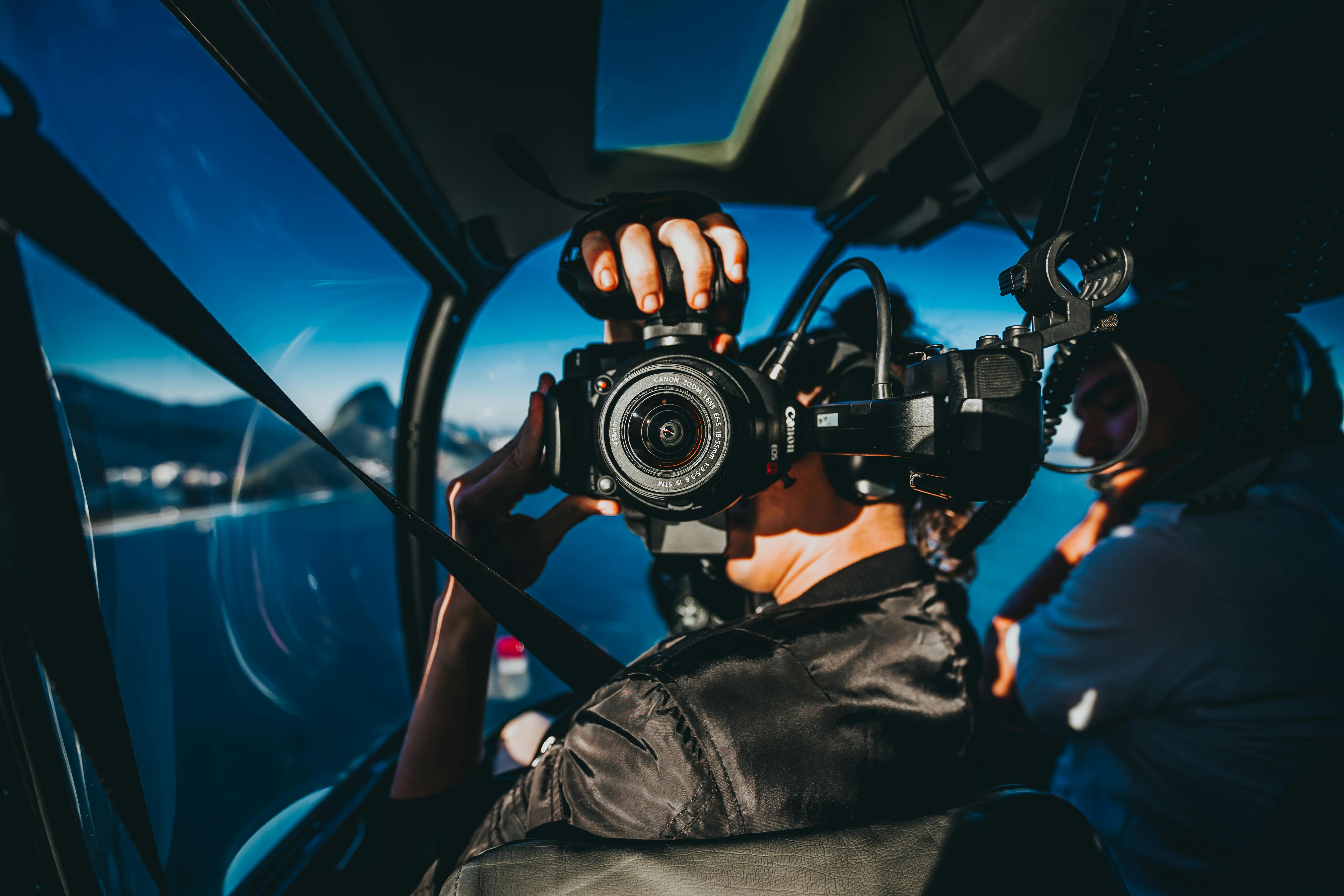
Frequently Asked Questions
Q: Can helicopters land at Everest Base Camp?
A: No. Current regulations restrict Base Camp landings except for emergencies due to unstable glacier terrain and climber protection. Flights land at Kala Patthar instead, which offers superior views anyway.
Q: What if weather cancels my flight?
A: Reputable operators reschedule or offer full refunds. This is the reason why it is essential to include buffer days in your itinerary and obtain travel insurance.
Q: Is altitude sickness something to be concerned about?
A: It is possible, but unlikely, because you are only at high altitude for 10-15 minutes, reducing risk. People with heart or respiratory conditions, on the other hand, should first consult with their doctors.
Q: Can children take this tour?
A: Yes, there's no age restriction. This is actually perfect for families wanting to experience Everest without trekking's physical demands.
Q: What's the weight limit?
A: Maximum 500 kg total for all passengers and luggage. At Kala Patthar specifically, 250 kg per trip is the limit, which is why Pheriche shuttling sometimes occurs.
Q: Do I need permits?
A: If you're already in Lukla, you likely have trekking permits. Helicopter operators usually handle Sagarmatha National Park fees if needed.
Why Choose Heli On Call?
Heli On Call is a well-known company because of its safety, dependability, and exceptional service. Our goal has always been to make helicopter rides safe, accessible, and memorable.
Our Story
At first, our only purpose was to connect the cities of Nepal with the rural areas so that travelers could easily see the country's beautiful nature. Over the years, we've grown from a tiny firm to one of Nepal's most trusted helicopter service organizations.
Our team has experienced pilots who know the mountains of Nepal inside and out, dedicated ground crew who make sure every flight goes smoothly, and customer service professionals who actually care about how your trip goes.
Our Fleet
Our fleet of helicopters is up-to-date and has the most current safety and navigation technology. Every plane goes through stringent maintenance tests and follows international rules for flying. We choose to date copters based on how effectively they perform at high altitudes, so you can be confident you'll be safe even in Nepal's difficult mountain environment.
What We Promise
Every day, we commit to fulfilling the following promises:
- Safety First: Your health and safety are our top priority. We never break the rules to stay safe.
- Professional Excellence: Our pilots and crew are among the best-trained in the industry.
- Service Oriented: We do everything possible to make sure you're delighted with our service.
- Taking care of the environment: We take care of Nepal's wonderful natural environment.
Why should you pick us for your helicopter needs?
You might be curious about what sets Heli On Call apart from other helicopter companies in Nepal. Let's chat about what sets us apart.
1. Pilots who have training and experience
Our pilots are not only licensed, but they are also excellent at flying in the highlands. They have all flown across Nepal's unique scenery for hundreds of hours. They know how the weather changes, how the wind moves across peaks, and how to land perfectly at high-altitude sites. When you fly with us, you can be sure that you're in the hands of true experts.
2. Always available
We don't stick to schedules, and neither do crises. You can reach our on-call service any time of day or night, every day of the year. We can dispatch a helicopter at any time of day or night, even at 3 AM. This is highly critical in medical emergencies and rescue missions where every second counts.
3. Prices that are easy to understand
There are no extra expenses or hidden fees. We think it's important to be honest about prices. You will pay the amount we claim you will pay. We'll make it clear what's in your package, from extra fuel expenditures to landing fees, so you can make sensible decisions.
4. Itineraries that can be adjusted
Your trip should be as unique as you are. We don't force you to fit into specific packages. Want to stay at Everest Base Camp for one more hour? Do you have to stop in Ghorepani? Want to fly at dawn? We can help you design the perfect trip that meets your dreams and your budget.
5. A Great Record of Safety
We don't just use the word "safety"; we believe in it. We have a solid safety record because we always follow our maintenance schedules, think carefully about the weather, and constantly train our pilots. We'll never rush a flight if the weather isn't right, even if it means modifying the schedule.
6. Insurance that covers everything
You may rest easy knowing that every flight is completely covered. We have adequate aviation insurance that protects both the crew and the passengers. We have robust financial protection in place in addition to our skills to keep you safe and secure.
7. Familiarity with the location
We know a lot about Nepal because we live here. We know the optimal times to fly specific routes, the rules in each area, the culture, and the greatest places that aren't in guidebooks. This local knowledge makes your experience better in ways that operators from other countries can't.
8. Excellent service for customers
Our crew dedicates itself to making your experience seamless and enjoyable, from the moment you ask a question until you return to base. We care about your happiness, are quick to respond, and are happy to help. Many of our clients come back to us and become friends.
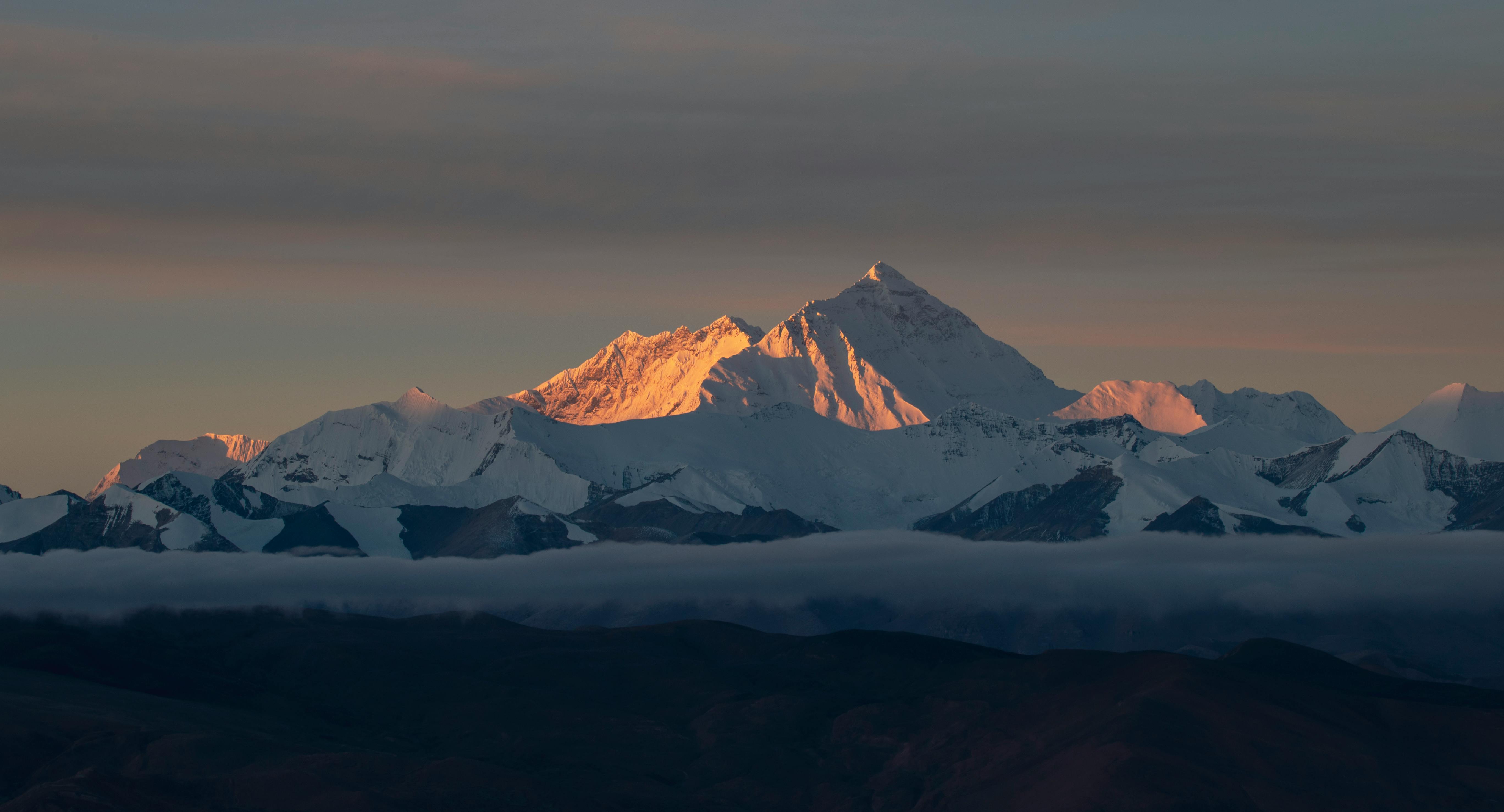
Ready to Fly? Contact Us Today
Standing at Kala Patthar with Mount Everest filling your vision is an experience that changes you. The cold air bites your cheeks, wind howls around you, and for a moment, you're literally on top of the world.
This journey doesn't have to stay a dream. Whether you're in Lukla right now or planning your trip, we handle every detail—permits, safety checks, weather monitoring, and seamless coordination—so you focus on the adventure.
Contact Heli On Call Today:
📞 Call or WhatsApp: +977 985-1417030
Get instant answers and personalized quotes.
📧 Email: [email protected]
For detailed inquiries and custom itineraries.
🌐 Visit: HeliOnCall.com
Explore packages, read testimonials, and see stunning guest photos.
Your journey to Everest starts with a single call. Let's get you there—safely, comfortably, and in style.
Don't let Everest remain a distant dream. Book your Lukla to Everest Base Camp helicopter flight today and witness the world's highest peak from the best seat in the sky.







